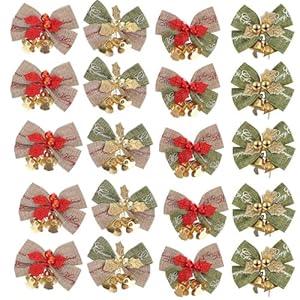
The moon doesn’t just move our seas, and mark time through its phases, but is an ever-evolving symbol in the visual arts that has collected a broad net of meanings. From rebirth to madness, and introspection to immortality, our fascination with the moon is imbued with the reassurance that it’ll be in our sky as long as we are. The Art Through Symbols series explores the interpretation of symbols throughout art history – be they cultural, religious, folkloric, or personal. Each article analyses a series of artworks, before detailing an art-making tutorial inspired by the symbol for you to try.

Art Through Symbols: The Moon
Interpreting the Moon

The Face of the Moon, 1797
John Russell RA
Pastel on paper, 45.4 x 60.7 cm | 17.9 x 23.9 in
Birmingham Museums
The moon has hung bright on our collective visual consciousness throughout history. Perhaps we are so enchanted by it because it’s our closest planetary neighbour in an endless universe, or that its cycles plainly mark the passage of time. The moon has always been associated most broadly with eternity, appearing to every living being for as long as our planet has existed and will remain. Our tides roll because of its constant tugging, and folklore and mythology both suggest the full moon pulls people into madness or beastly transformation. There’s also a romance to wishing upon the moon, gazing at it with yearning for another place. Since it reflects the light of the sun, it’s also apt that so many artworks use the moon as a visual device for inner reflection or meditation. The following examples span the world, from Egypt to India, Italy, Germany, and Japan.
The Moon In Art History
Travel and Renewal
The moon was essential to the passage of time in Ancient Egypt, since they originally worked from a lunar calendar. It’s no surprise that many of their Gods were depicted with the moon, with each carrying different symbolic associations. Most people are familiar with Ra, the Sun God of Ancient Egypt, who pulled the Sun across the sky in his chariot, but you may not have come across Khonsu, meaning ‘traveller’. He is depicted in a variety of forms in art, sometimes as a young man or with the head of a falcon. He wears the moon as his crown, keeping travellers safe at night by lighting the way. In this interpretation, the moon is a guiding force, offering safety to those who look to it.
Another God associated with the moon is Osiris-lah, who is a form of Osiris directly related to the moon. Osiris himself is the God of the Underworld, who was resurrected from the dead by his wife, Isis. Rebirth aligns with the moon, as it also progresses from full to crescent every month. In relation to this story, the moon is a tangible symbol of renewal and regeneration.

Left: Khonsu Pendant, ca. 1295-1070 BC
New Kingdom, Ramesside
Gold pendant, 3.8 x 1.5 x 0.6 cm | 1.5 x 0.6 x 0.2 in
The Metropolitan Museum of Art
Right: Osiris-lah, 664-30 BC
Late Period – Ptolemaic Period
Cupreous metal, 13 x 3.5 x 2.7 cm | 5.1 x 1.4 x 1.1 in
The Metropolitan Museum of Art
Meditation
A ragamala is a series of paintings that depict a range of musical melodies, individually known as ‘ragas’. The musical modes are also often linked to the seasons and different times of day, here being the night sky. In this beautiful work by Ruknuddin, we see an ascetic (a person who practices extreme self-discipline by rejecting indulgences and possessions to pursue their spirituality) listening to a young man playing the rudra veena at night below a lush tree. Another text says that the figure on the left is “an ascetic, whose mind is drowned in meditation on Shiva… crowned by the white moon.”
Shiva is one of the main deities of Hinduism, conveying to us that the moon in this context is a symbol of immortality, and a font for thought on the self and the divine. Compositionally, the ascetic’s head is bowed towards the moon, which we can connect in a triangle to the rudra veena player. This dynamic diagonal triangle is balanced by the vertical support of the tree, giving the painting a peaceful effect. This is enhanced by the muted palette and soft gradient in the sky beyond.

Ragini: Folio from a ragamala series, ca. 1690-95
Ruknuddin
Watercolour and ink on paper, 25.7 x 18.4 cm | 10.2 x 7.3 in
Madness and Transformation
The moon has been widely associated with madness since the Roman period. The name of the goddess who was the divine embodiment of the moon, Luna (Latin for moon), is the direct source of the outdated word ‘lunatic’. Even before this point, the Greek philosopher Aristotle wrote a theory considering that the high water content of the brain may make it victim to the cycles of the moon, bringing around madness like a tide.
Before the Roman goddess Luna, the Greek goddess of the moon was Selene. She was so in love with the mortal Endymion that she granted him eternal youth, at the cost of him being forever asleep. There is a madness to this story, in that although he was granted eternal life, his own life ended to be admired for eternity. The story was very popular for funerary decorations because of the implied death of the character. On this sarcophagus, we see the myth of Endymion and Selene carved in marble, where she arrives in her chariot to visit him in his eternal sleep. The swathe of fabric that swirls around her from her clenched fist and tensed arms forms a crescent moon shape, conveying a sense of her power.

Marble Sarcophagus with the Myth of Endymion, mid-2nd Century CE
Roman
Carved marble, 48.9 x 198.8 x 53.3 cm | 19.3 x 78.3 x 21 in
The Metropolitan Museum of Art
Introspection
Caspar David Friedrich imbued his paintings of the natural world with tangible emotion. He perceived the world around us as full of powerful forces that people were futile to interfere with. In his sensitive work Two Men Contemplating the Moon, we are placed within a thicket of gloomy forest, gazing up toward two men admiring the view of the warm moon together. It’s believed that the figures are Friedrich himself, alongside another artist that he mentored, called August Heinrich.
Compositionally, the direction of our gaze through the work is interesting since the viewer is positioned below the men, who are also looking down at the moon. This gives us the sense that we aren’t sure what’s over the hill, except for the certainty of the moon – and with it, time passing. In this sense, the work can be interpreted as a contemplation on the afterlife, or introspection on a life nearing completion, without knowing what comes next. This painting is the third version of the same image by Friedrich: the first was made when Heinrich was still alive, and the other two beyond his death. In this artwork, the moon is imbued with introspective thought on themes as broad as remembrance, reassurance, and mystery.

Two Men Contemplating the Moon, ca.1825-30
Caspar David Friedrich
Oil on Canvas, 34.9 x 43.8 cm | 13.7 x 17.3 in
The Metropolitan Museum of Art
The Moon Humanised
The vision of Saint John in Revelations 12 describes the ‘Woman of the Apocalypse’, as “a woman clothed in the sun, and the moon was under her feet”. This passage inspired a host of artistic interpretations of the Madonna standing on top of the moon in the Gothic period, and even became so popular in 15th-century Germany that pre-existing statues were altered to include the moon.
Albrecht Dürer made various versions of this image in print throughout his career. And the two I’ve selected here are my favourites because of the portions of the moon’s ‘face’ that we see under her trailing dress. In these artworks, the moon is humanised as sentient and obedient, holding steadily under her figure. Her position over the flipped moon signals a victory over the cycles of the earth, telling us that divinity goes beyond the passages of time that the moon represents for us on earth. In this work, the moon is no longer a God itself or part of the Heavens, but put on the same level as the rest of us on Earth, by being humanised.

Left: The Virgin and Child on a Crescent with a Starry Crown, 1508
Albrecht Dürer
Engraving on laid paper, 11.9 x 7.8 cm | 4.7 x 3.1 in
National Gallery of Art
Right: The Virgin on the Crescent, c. 1498 -1499
Albrecht Dürer
Engraving on laid paper, 10.8 x 7.7 cm | 4.3 x 3.1 in
National Gallery of Art

Eternity and Importance
One Hundred Aspects of the Moon is a series of woodblock prints created by Tsukioka Yoshitoshi, made between 1885 and 1892. The scenes cycle their way through the phases of the moon, featuring characters from poetry, history, folklore, theatre, and popular Chinese and Japanese literature – all seen by moonlight.
Yoshitoshi made these works after experiencing a time of change in Japanese society, seeing the transition from feudal rule to government when he was 26 years old. This opened Japan up to the influences of the Western world, forcing society to adapt. Yoshitoshi made this series towards the end of his life to immortalise the characters and stories that he saw as important to preserve for the future, stemming from the anxiety of societal change. They were exceptionally popular, and people would queue up to buy each new edition, sharing his same hopes and fears.
In these scenes, the moon bears witness to each cultural moment, imbuing them further with the wish for them to be considered into eternity like the moon itself.

Left: Moon and Smoke from One Hundred Aspects of the Moon, 1886
Tsukioka Yoshitoshi
Colour woodblock print, 37.5 x 25.4 cm | 14.8 x 10 in
Art Institute Chicago
Right: A Cauldron on a Moonlit Night from One Hundred Aspects of the Moon, 1886
Tsukioka Yoshitoshi
Colour woodblock print, 37.5 x 25.4 cm | 14.8 x 10 in
Art Institute Chicago
The Moon – Art Prompt
I was inspired by the peace imbued in the painting by Ruknuddin, paired with the graphic lines and personification of the moon in Dürer’s prints. For this art prompt we’ll give the moon a face, and a landscape for it to contemplate over.
For this art prompt you’ll need:
A sheet from an Arnhem 1618 Paper Pad
William Mitchell Calligraphy Joseph Gillott Drawing Set
Schmincke Aqua Bronze Powder in Silver

To begin my work, I lightly sketched the placement of the moon, a tree, and the landscape below them with a 2H graphite pencil. Using a light pencil makes it easier to completely erase later.

Next, I poured the Sennelier Indian Ink into a small round ceramic palette. I began drawing with the nibs and pen holder from the Joseph Gillot Drawing Set, taking my time to dip the nib into the ink periodically without overfilling it and risk making splotches.

I worked my way around the drawing, starting from the moon itself, to the light beams around it, down to the ground and tree, before finishing the sky.

I combined different areas of hatching, cross-hatching, and stippling to vary my mark-making, and provide textural differentiation between each area of the composition. To create thinner lines I swiped the pen sideways, and made thicker lines by drawing with it straight and pressing harder.

Once I finished the ink drawing, I wanted to add some metallic highlights to the drawing. The Schmincke AquaBronze powders are water-activated and have brilliant pigmentation that can be applied finely with a brush.

I tipped some of the silver AquaBronze powder into another round ceramic palette and mixed it with water from a separate dish with my brush. This gives you much more gradual control over the consistency of the paint than trying to estimate how much water to pour into the powder.

To finish my drawing of the moon, I picked out some silver highlights on it, and some dappled light on the leaves of the tree and grass below.

Further Reading
Composition Throughout Art History
Inside the Sketchbook of Meg Buick
IUILE Colourshift Watercolours
Shop Art Materials on jacksonsart.com
The post Art Through Symbols: The Moon appeared first on Jackson's Art Blog.
Trending Products












